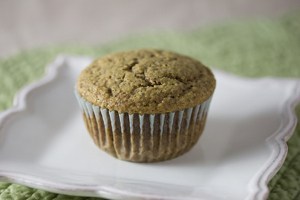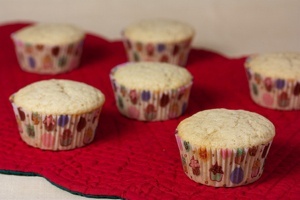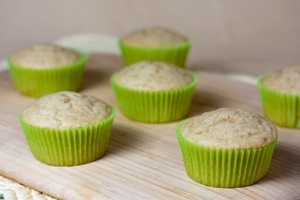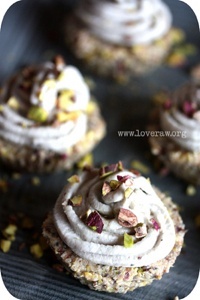Veganbaking.net
Vegan Baking Recipes
Vegan Cake Recipes
Vegan Cupcake Recipes
Vegan Green Tea Cupcakes
Vegan Green Tea Cupcakes
4
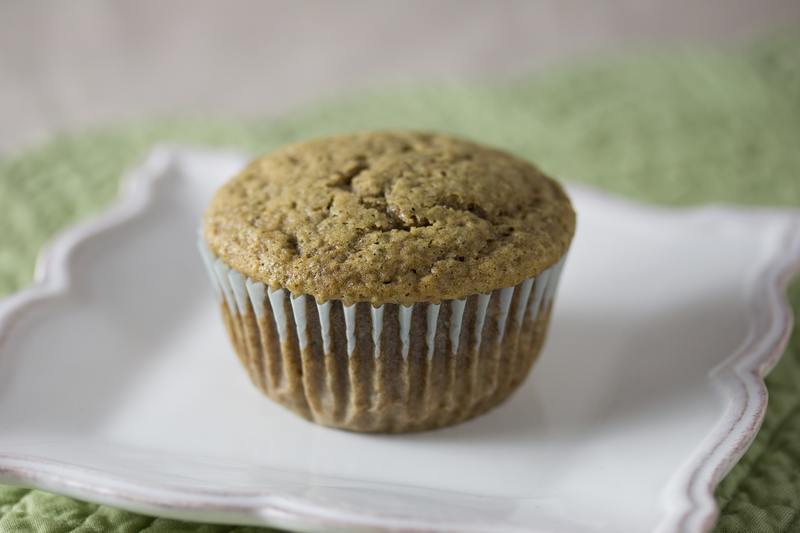
I love how green tea has a subtle ability to refresh coupled with a slight hint of savoriness. I adore how vegan cupcakes can be a celebratory canvas for almost any flavor combination, that you get to just pick up and take a bite out of. But how do you infuse green tea into a baked cake product? Easy, right?
Gray’s Vegan Cupcake Anatomy
When I first started embarking on this a few years ago, I realized that it was obvious (or totes obvs, as I often say to purposely make my friends cringe) to use strong green tea and/or matcha powder as part of the liquid in the recipe. This would then be combined with all-purpose flour. What could possibly go wrong? Wait for it... gray cupcakes, that’s what. Try bringing that to a party and practice saying “oh but they’re green tea cupcakes” because that’s what you’re going to be saying to everyone that contemplates eating one.
I soon learned that I’d have to once again delve into the depths of food science to figure out why this was happening and, more importantly, figure out how to make real green tea cupcakes. This is war. I’m not going to let those little gray cupcakes get the best of me.
All-purpose flour contributes to yellowing
It turns out that there were two things that were contributing to gray cupcakes. The all-purpose flour I was using was the first culprit. Most cake flour is bleached which denatures proteins which allows the gluten in the flour to bind less and enables to flour to absorb more water. Another often overlooked benefit of this bleaching process is that it causes the flour to remain white throughout the baking process. All-purpose flour, which is often unbleached, will turn a golden yellow after it’s baked or heated. I’m unsure exactly why bleached flour appears to resist yellowing. Perhaps the compounds that change color during baking are deactivated during the bleaching process. It could also be that since the proteins are denatured, they’re less affected by heat related browning.
Cake flour enables baked items to remain white
Switching to cake flour made the cupcakes turn out brown. We’re getting somewhere! But I would still have to tell everyone these were green tea cupcakes. But at least brown is more appetizing than gray, right? There are now unbleached cake flours on the market and I haven’t had a chance to test this recipe with them. If you give it a go, please report back and let us know how it worked out in the comments section below.
A popular way to create a cake flour substitute is to take 1 cup of all-purpose flour, subtract 2 Tablespoons from it and add 2 Tablespoons of cornstarch or tapioca flour to it. This won’t work for this recipe because you’re still using all-purpose flour which will turn yellow during baking.
Enzymatic browning effects matcha during baking
But what was making the cupcakes turn brown? As I learned from my Vegan Blueberry Beetnik Muffin recipe, there was enzymatic browning that was occurring during the matcha’s exposure to heat during baking. In the muffin recipe I was having issues with them turning gray during baking until I remembered that alkaline accelerates browning and acid inhibits it. This is why if you add lemon juice to a sliced avocado or apple, you will have less browning as they sit in the open air. The acid deactivates the enzymes that oxidize them.


It’s important to note that acid and alkaline have the same effects on other forms of browning, not just enzymatic browning. To illustrate this, add a couple pinches of baking soda the next time you caramelize onions in a skillet. You’ll save about 20 minutes!
Fine tuning the acid in the cupcakes allowed the color to shine
After some testing I found that increasing the apple cider vinegar to 1 Tablespoon would provide the perfect amount of acid to deactivate the browning of the matcha, resulting in about as much green color I could legally get from green tea. This would also be enough to probably convince people that these were actual Green Tea Cupcakes without needing a full-time announcer to be present.
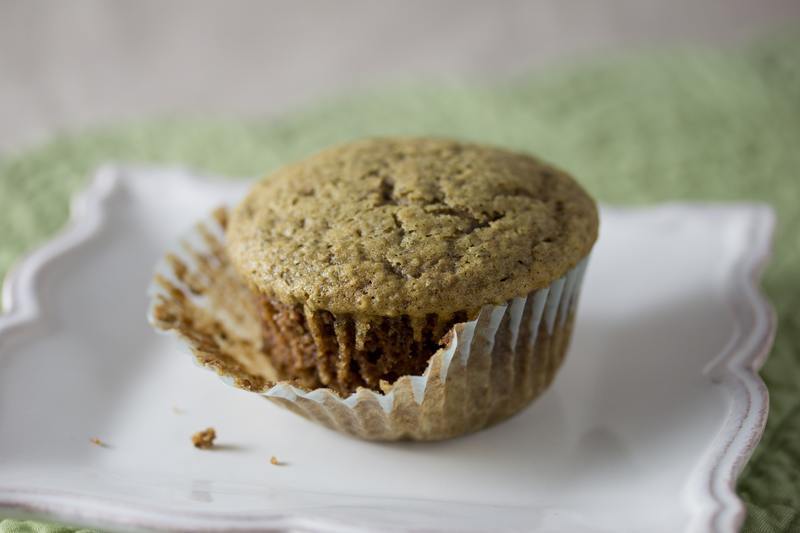

I then made a few batches to figure out how much matcha to use to create a subtle green tea flavor while enabling the proper green tea colors to come through. Early on I found out that using actual brewed green tea was unnecessary because it made barely any difference with color and contributed unwanted bitter flavors. In contrast, since matcha is just dried green tea leaves ground into a powder, it contributes more color, less bitterness and a wonderfully rich, smooth green tea flavor. The result is what I think you’ll find, are totes obvs green tea cupcakes.
Find more Easy recipes on Veganbaking.net
Find more Easy recipes on Veganbaking.net
Vegan Green Tea Cupcake Recipe
¾ cup + 1 Tablespoon + 1 teaspoon non-dairy milk
1 Tablespoon apple cider vinegar
1 cup + 3 Tablespoons cake flour, sifted
2 Tablespoons matcha green tea powder, sifted
1 teaspoon baking powder
½ teaspoon baking soda
½ cup + 3 Tablespoons sugar
1/3 cup vegetable oil
1 teaspoon vanilla extract
¼ teaspoon salt
1) Curdle the non-dairy milk
Preheat oven to 375F (191C). In a small mixing bowl whisk together the non-dairy milk and apple cider vinegar until smooth. Allow the mixture to sit for about 10 minutes so the mixture thickens slightly.
2) Sift the matcha with the other dry ingredients
Place a flour sifter in a medium mixing bowl. Add the cake flour, matcha powder, baking powder and baking soda to the sifter and sift it into the bowl. Sifting these ingredients will accomplish two things: First, it will eliminate lumps in the matcha flour. Second, it will incorporate a small amount of air into the mixture which will enable to cupcakes to be as light and fluffy as possible.
3) Whisk together the flavor building ingredients
In another medium mixing bowl whisk together the sugar, vegetable oil, vanilla extract and salt. Whisk in the non-dairy milk apple cider vinegar mixture from step 1 until well incorporated.
4) Whisk the cupcake batter together
Now add the wet ingredients to the dry ingredients and briefly whisk together until just incorporated and the lumps are eliminated. It’s important to not over whisk here. Doing so will bind too much gluten and cause the cupcakes to become dry and mealy.
5) Bake the vegan cupcakes to perfection
Pour the batter into a cupcake mold lined with cupcake liners so the mixture is ½ the way up to the top of the cupcake liner. Bake for 17 minutes or until an inserted toothpick comes out clean.
Store at room temperature in a covered container for up to 3 days. This recipe makes 12 Vegan Green Tea Cupcakes.



